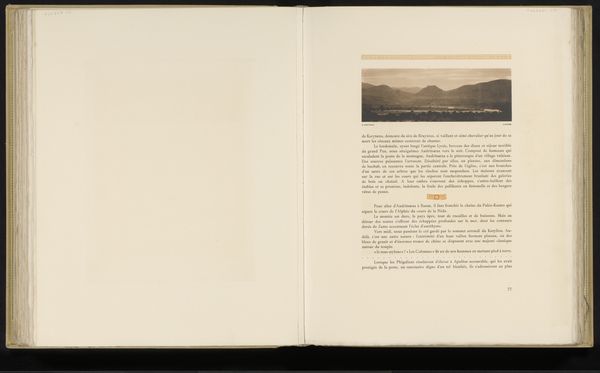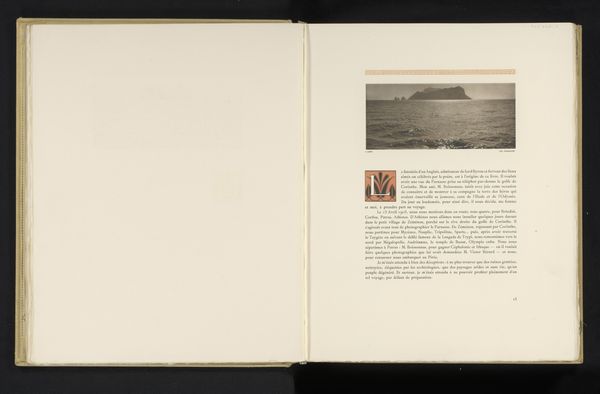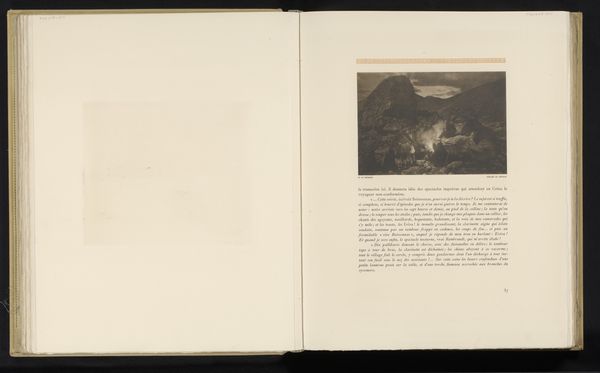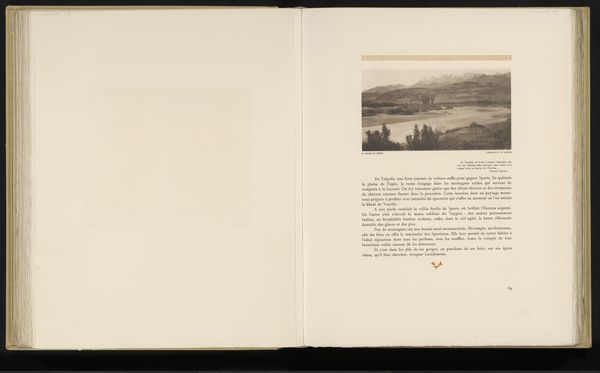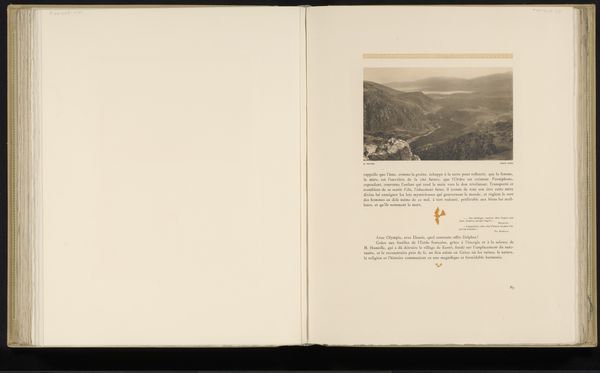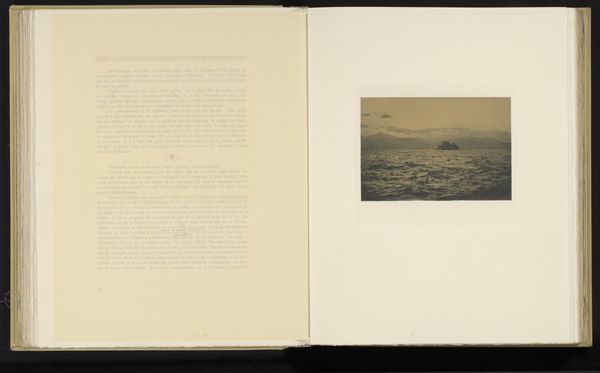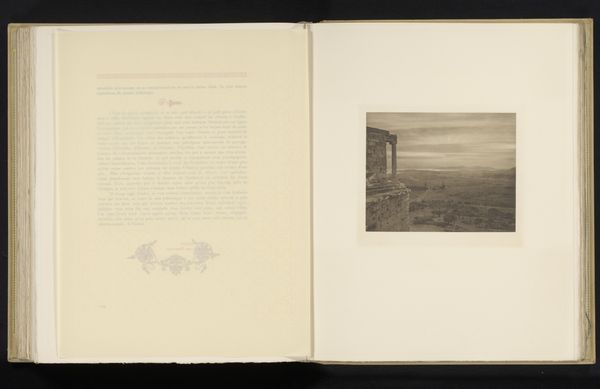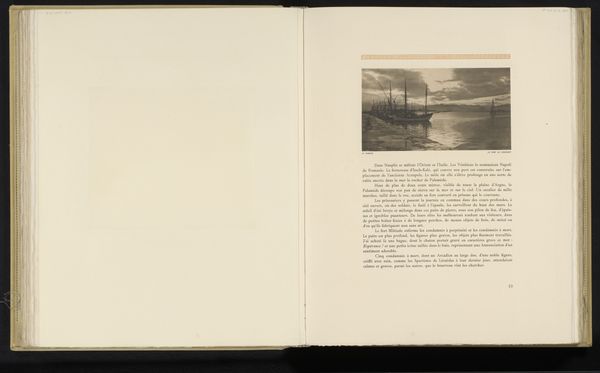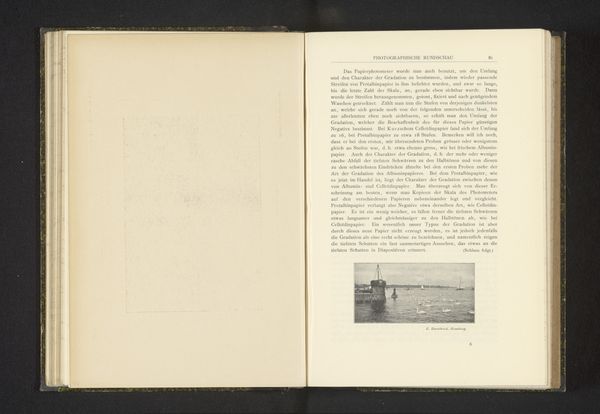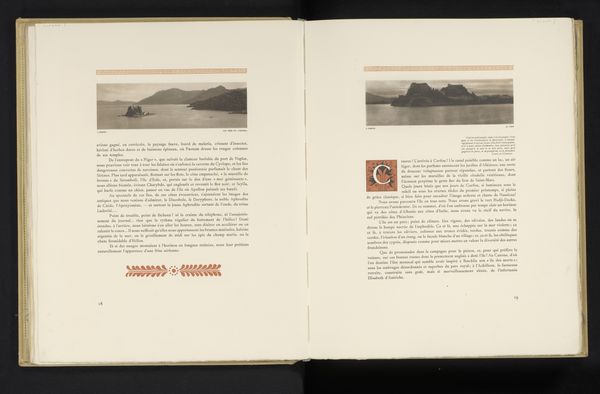
print, photography, photomontage
#
sand serif
#
aged paper
#
font guideline
#
paperlike
# print
#
landscape
#
photography
#
photomontage
#
mountain
#
thick font
#
publication mockup
#
letter paper
#
paper medium
#
historical font
#
publication design
Dimensions: height 85 mm, width 225 mm
Copyright: Rijks Museum: Open Domain
Curator: Here we have a page from what seems to be an early 20th-century book featuring a photomontage, specifically a print of "Euripusstraat bij zonsopkomst, in de verte de Dirphys" by Fr\u00e9d\u00e9ric Boissonnas. What strikes you about this image? Editor: It’s the texture that grabs me immediately—the creamy, almost vellum-like quality of the paper and the way the print is set within it. It really evokes a feeling of craftedness, even before considering what’s depicted. Curator: Indeed. Beyond the tactile impression, observe the symbolic weight the landscape itself carries. Mountains, the sea at dawn… These are motifs steeped in cultural memory, representing aspiration, the sublime, even a sense of ancient connection. Editor: And I’m wondering about Boissonnas' process. Photomontage offers an intriguing combination of mass-produced photographic elements combined with hand-laid text within a crafted page. Is this hinting towards the shift in production of printed imagery, in conjunction with handcraft? Curator: An astute observation. Think of photography at this time, its power to both democratize image-making and yet remain a process shrouded in technical expertise. Boissonnas seems interested in the potential, showing this specific place in time, yet within this book, bound by a cultural, historic lens, it becomes part of a symbolic journey. Editor: So, how do the means of production inform our understanding of the final art? Is the emphasis of process, materials, and method itself shaping how the viewers approach the actual imagery represented? What would someone encountering this object gain of the culture through its method of production? Curator: Absolutely, the book becomes an object with cultural connotations. It allows an access, a democratization of the location, however romanticized it might be, and the act of holding such an image gives the viewer their own cultural insight and understanding, or indeed, their own feeling of possession, regardless of if the image itself presents accurate information. Editor: I keep coming back to the way the paper grounds the photograph, elevating it into a singular object even when produced at scale. The material context here is so vital. Curator: Agreed. Seeing this page makes one appreciate the multilayered narrative—the place itself, the printing technology, the handcraft, all reflecting our persistent human quest for connection across time and distance. Editor: Yes, it’s more than just a landscape; it's a cultural artifact that tells a fascinating story about the mediation of place.
Comments
No comments
Be the first to comment and join the conversation on the ultimate creative platform.

